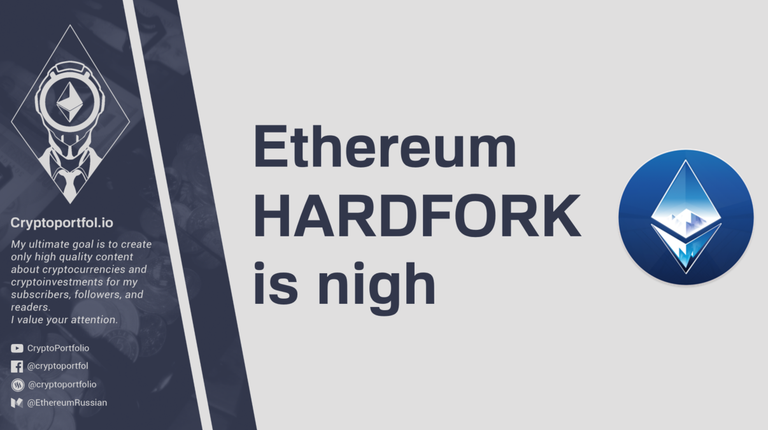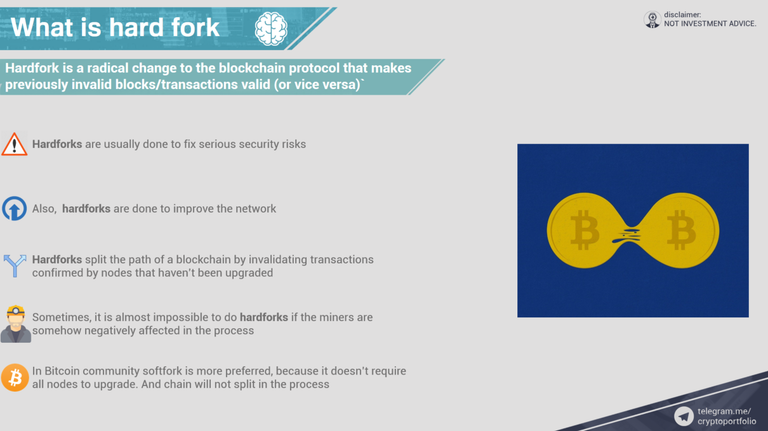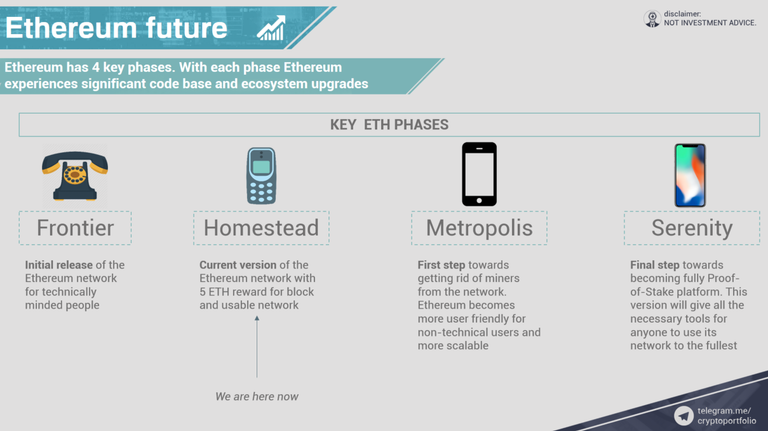
Do you know what we can learn from the Bitcoin inability to change? Many things. One of the things is that miners, who are the main backbone of Bitcoin stability, are the ones who benefit from letting the old system stay the same. They benefit from high transaction fees that keep bitcoin from going mainstream as the means of payment. And Ethereum blockchain also can be affected by such a situation if it doesn’t move in the direction of constant improvement. And that’s why hardforks are good for us, Ethereum users. Coming hardforks are not only limiting the power of miners in the network, because Ethereum is going to adapt Proof-of-Stake quite soon, but also making Ethers much more valuable due to decreasing inflation in the ecosystem.
Every investor and Ethereum holder are interested in the low or non-existent inflation. That’s why the coming Ethereum hardfork is so vital for the ecosystem. And I know that the decrease in miner rewards is not the only improvement in the coming EIPs (Ethereum improvement proposals), but I think that miners, having too much power over the blockchain, can really make our lives much more complicated. Just look at current Bitcoin situation if you want to see what could happen to Ethereum. Miners are not interested in the improvements of the networks, they are interested in maximization of their own gain.
Hardforks are what I like about Ethereum, because each time they happen, the network becomes more usable and sophisticated. This time is no different. In this presentation I will show you how exactly ETH will change and why this hardfork will have positive impact on the ecosystem.

Let’s start with the description of hardforks. Hardfork is a radical change to the blockchain protocol that makes previously invalid blocks/transactions valid (or vice versa) and as such requires all nodes or users to upgrade to the latest version of the protocol software.
Hardforks are usually done to fix serious security risks. Bitcoin has experienced a number of bugs that lead to hardforks. They fixed the bugs and cleaned the mess that was created. For example, in 2010 the bug in Bitcoin blockchain gave the chance for an attacker to create 92 billion of bitcoins.
Also, hardforks are done to improve the network. That’s what Ethereum does quite often.
Hardforks split the path of a blockchain by invalidating transactions confirmed by nodes that haven’t been upgraded.
Sometimes, it is almost impossible to do hardforks if the miners are somehow negatively affected in the process.
In Bitcoin community softfork is more preferred, because it doesn’t require all nodes to upgrade. And chain will not split in the process. Chain split is a headache for any participant in the network. Creation of new chains from the chain splits mess up the value of cryptocurrencies, harms community.

Ethereum has 4 key phases. With each phase Ethereum experiences significant code base and ecosystem upgrades. It was planned quite a while before by developers no to let miners stall the development.
The frontier phase was the initial release of the Ethereum network for technically minded people.
Homestead is current version of the Ethereum network with 5 ETH reward for block and usable network. Well, if we put network congestions out of equation.
Metropolis is the first step towards getting rid of miners from the network. Ethereum becomes more user friendly for non-technical users and more scalable.
Serenity is the final step towards becoming fully Proof-of-Stake platform. This version will give all the necessary tools for anyone to use its network to the fullest

Coming Ethereum hardfork on 17th of October will bring this blockchain closer to the Metropolis milestone.
Metropolis will be divided into two major hardforks. Byzantium and Constantinople.
Byzantium includes 9 ethereum improvement proposals, hardfork will happen on 17th of October.
Constantinople is the second upgrade and the concrete date is still not known.
Byzantium includes quite a lot of improvements, which include:
• More efficient light clients
• Less miner rewards on the forked chain. Block reward is reduced to 3 ETH instead of 5 ETH. This is the first step towards Proof-of-Stake adoption.
• ZK-snarks privacy feature implementation! There was a successful usage of zk-snarks technology on the ropsten testnet, where Byzantium is currently adopted. And this is just amazing, the privacy feature of zcash on Ethereum. Wow.
• Safer smart contracts with static contract calls
• Forwarding contracts work more efficiently with this upgrade
• Different improvements for DAPP developers
• Delay of Ice Age for another 18 months. This is the feature that makes it harder to mine Ether with the progress of time.
Good job cryptoportfolio. Great info. You were speaking in a youtube livestream about DAPPs and users of applications who use ethereum without knowing it. I am curious what do you think about KIK ICO and how many transactions can they bring to ethereum. They have about 15 millio monthly active users. Another question: transactions of any kind of Ethereum based ERC32 tokens count in as ethereum transactions? Or just the transactioned ETH count. Thanks